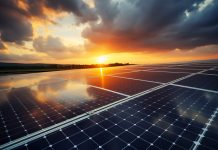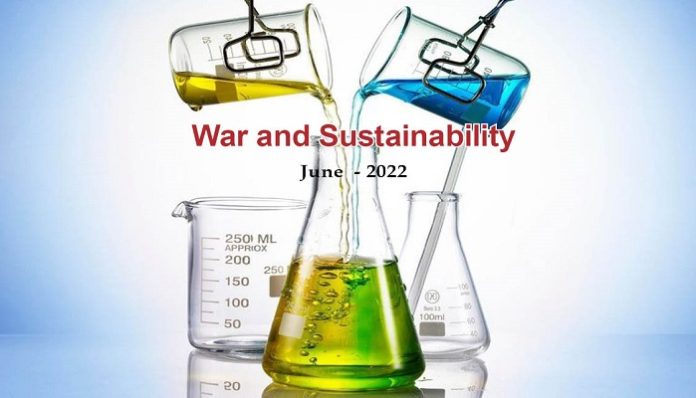The continuing war in Ukraine is having catastrophic consequences on the world energy markets. It is threatening to derail our ambitious journey towards Net Zero. Lessons learned from the 1973 oil crisis would be useful in handling the present situation. We have a chance to reshape the energy landscape one more time.
War and Sustainability
On October 6, 1973, a Saturday and the Jewish religious holiday of Yom Kippur, Egyptian and Syrian armies armed with Soviet weapons launched a huge offensive on Israel. Israel was caught off-guard and the losses were heavy, but ten days later, the tide of the war turned. On 17th October, the Arab oil-producing countries under the OPEC umbrella cut their production by 5% and pledged to do the same month after month till Israel withdrew from all occupied Arab territories. More importantly, they imposed an oil embargo against USA and some other countries in retaliation for their support to Israel. By March 1974, the oil price had quadrupled from $3 to $12 per barrel. USA introduced fuel rationing, lowered speed limits for automobiles and extended daylight savings time for nearly two years. Energy Efficiency was born
Energy Efficiency
Many economists and environmentalists believe that the 1973 oil shock has saved the planet. Between 1977 and 1985, the US economy grew by 27% but the oil consumption fell by 17%. During those 8 years, the energy consumption per GDP declined by 35%. This was possible mainly because of a slew of energy efficiency measures. Automobile industry saw the biggest transformation as big gas-guzzling cars were quickly consigned to the junkyard. Innovations like lightweight materials, turbocharging, front-wheel drive, 8-speed transmission and direct fuel injection surged through the automobile industry continuously raising the efficiency bar. Congress passed legislation to bring efficiency standards for electrical appliances. Codes and standards were brought to regulate the energy usage in buildings and factories. The 1973 oil crisis was also responsible for kicking off research into renewables.
Russian Invasion
49 years later, we have another energy crisis brought about by the Russian invasion of Ukraine. It has come at a most inopportune time when the world was on the cusp of embarking on an ambitious and arduous journey towards Net Zero. It appears to have scuppered many a plan for transition to clean energy. Russia has cut the flow of natural gas through the Nord Stream 1 Baltic Sea pipeline. 12 countries in the European Union have been affected by the cut. The hardest hit is Germany, the biggest economy in Europe. Germany has activated the second stage of its 3-stage gas emergency programme and is now perilously close to rationing supplies to the industry. German industry is staring at recession. Germans have been asked to reduce their energy consumption as a part of national effort to conserve gas for the coming winter. Germany and other EU countries are now looking towards coal to make up for the energy deficit.
Coal is back
Germany and many other European countries are drawing up plans to restart coal-based power plants. This is a major policy reversal after years of efforts to phase out coal and reduce greenhouse gas emissions. Energy security has displaced concerns of global warming and climate change. It is now a question of survival. BASF, the world’s largest chemical company is working on emergency plans to prioritise production in the face of energy shortage. Other industries have decided to put on hold their plans to shut down coal-fired boilers. Coal was the main sticking point at COP26 held in Glasgow last November, where new commitments for phasing out coal were extracted from 23 countries. The press release at the end of the Glasgow Summit grandiosely trumpeted “coal is being consigned to history at COP26, as countries, banks and organisations move away from the single biggest contributor to climate change”. But just six months later, coal is back. It is a huge blow to the sustainability efforts.
Energy Investments
As per a report released by International Energy Agency (IEA) this month, energy investment is expected to increase by 8% this year to reach USD 2.4 trillion, well above pre-Covid levels. But in the changed landscape, many countries are viewing the investments through the lens of energy security. Governments, businesses and investors are faced with a dilemma of backing energy projects that meet urgent short-term needs, but fall foul of long-term Net Zero goals. Investments in fossil fuel projects are rising, driven by current high prices and reinforced by a desire to wiggle out of Russian stranglehold. IEA also warns that almost half of the additional investment of USD 200 billion would be accounted by the rising costs. After years of decline, costs of solar panels and wind turbines have gone up by between 10% and 20%. The price increase and disrupted supply chains of minerals and metals like lithium, cobalt, nickel, copper and aluminium that are critical for energy transition are also a major dampener. Inflation is threatening to apply brakes on investments in renewable energy.
Digital Technologies
The high energy prices also provide a fresh impetus to revisit the energy efficiency schemes that had been placed on the backburner for economic reasons. When the concept of Energy Efficiency was first enunciated in the 1970s, the world was yet to digitalise. But now that we have many mature digital arrows in our quiver, it is a good time to leverage them for improving energy efficiency. Big Data, for instance. can be used not only for operating the plants more efficiently, but also to improve supply chain logistics. The gains accruing from the new wave of energy efficiency measures may be individually small, but cumulatively they will be big enough to make a significant difference.
Path Forward
Will the Ukraine crisis derail our journey to Net Zero? The jury is still out on the question. An unequivocal answer depends on the extent and duration of the war. The war has already gone on for four months and the end doesn’t appear in sight. However, most analysts and think-tanks are making guarded statements that they foresee a modest acceleration of energy transition. Earlier this month, President Biden invoked the Defence Production Act to accelerate production of key components for clean energy technologies. These include electrolysers, fuel cells, photovoltaic cells, Platinum group metals, heat pumps, transformers and even insulation.
Epilogue
The response to the 1973 oil crisis reshaped the energy landscape for the subsequent 50 years. The current crisis is forcing us to re-examine our relationship with energy – how we produce and how we consume. We now have a historic opportunity to lay down the roadmap to build a more sustainable planet in the next 50 years.
Readers’ responses may be sent to:
k.sahasranaman@gmail.com or
chemindigest@gmail.com
































